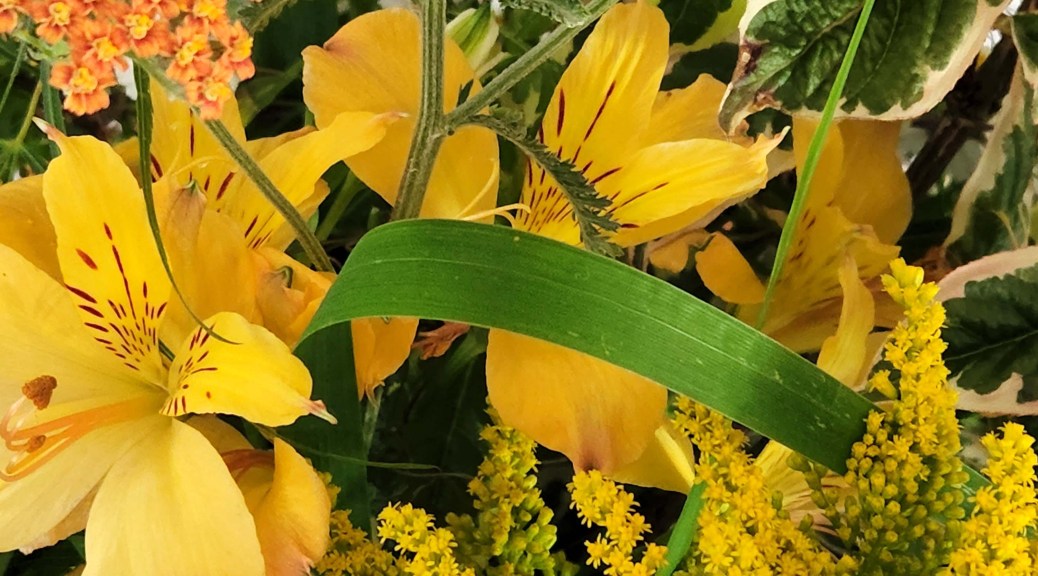Travelling and Textiles – a perfect mix!
It’s summer time here in Ireland and the living is, well, slightly more laid back than the norm. Having decided to metaphorically kick off the shoes for the month of July, I thought it might be nice just to “see and share ” rather than “do” and this forms the basis of my post.
Before I start on the main focus of this post (my holiday in Italy), I just have to show you a beautiful piece that totally blew me away. Before heading off, I visited Dublin’s Botanical Gardens. Founded in 1795, it is an oasis of calm for any visitor and I would highly recommend a visit if you happen to be in the neighbourhood. While there, I noticed that there was a patchwork exhibition happening in one of their exhibition spaces. This piece just caught me, so I want to share it with you. The artist is Ethelda Ellis and the piece is called ‘Aoife’s View’. The curator told me that Ethelda is a medical doctor by profession. If you would like to see more of Ethelda’s beautiful creations check out her blog: http://ethelda.blogspot.com/

Now, to the Italian holiday. We headed to Como mid-July and, in spite of the heatwave, spent our time sightseeing and eating! Our base was Como which is to the north of Italy, right beside Switzerland. Lake Como is totally dwarfed by the Alps – a really beautiful place.
We called into the Cathedral, the Duomo which was magnificent internally and externally. I reckon that to appreciate all its beauty would take months observing 24/7! I want to share with you a small area of a tapestry which was made in 1610 and which underwent restoration in 1990. It was impossible to get a good photo of the entire masterpiece as so much detail would have been lost. So I settled for a little!


One of our tours took us to the tiny picturesque village of Orta which is situated on Lake Orta. It was recommended that we visit the interior of the local church which was situated at the top of a steep street.

My journey was interrupted by the sound of a piano recital and when I investigated I discovered a rather special textile exhibition happening in the same building. The works exhibited were by Sergio Cerini. The artist merges his early experiences in the Italian high fashion industry with his current artworks, producing beautiful pieces which are in essence a mix of paper mache and textiles. The description does not do justice to his widely exhibited pieces and he was reluctant to allow me to photograph his work. He did, however pose in front of one of the pieces and others can be viewed on his Instagram page @sergiocerini

Since the 1800s, the city of Como was historically the main producer of Italian silk. When ultimately production was outsourced to China, the area was in danger of losing connection with its cultural heritage. The large factory was bought by the Hilton hotel chain. These photos show early paintings of the factory, what it became at the height of the industry and where it is now (apologies for the reflection on the glass):



Rather than allow the old machinery to be lost to history, a wise decision was taken about 10 years ago to set up an Educational Silk Museum to preserve these beautiful machines. Along with displaying the machinery, some of which dates back to the nineteenth century, the museum offers interactive videos and exhibits of high fashion clothing. Unfortunately this section was not open during my visit but I thought it might be fun to show you some of the many machines featured. So please, grab a cuppa, sit back and I hope you enjoy the show. I have included captions for ease of reference.































































































































